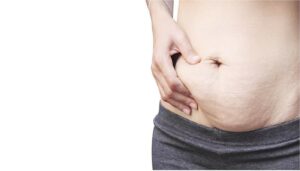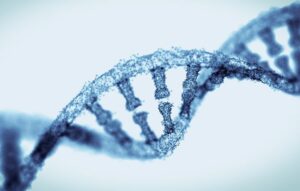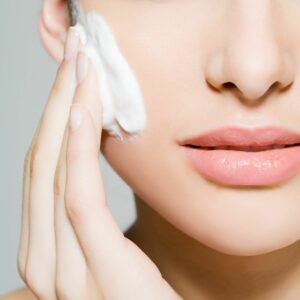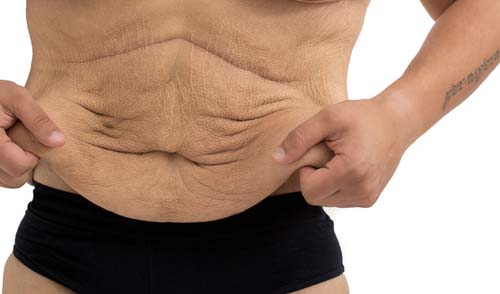Losing weight is a huge accomplishment, but for many people, the battle doesn’t end once they reach their goal weight. One common problem that arises after weight loss is loose skin. This can be extremely frustrating and can make it difficult to maintain your new body shape. In this blog post, we will discuss 17 steps that can help reduce loose skin after weight loss. Keep reading to learn more!
Contents
- 1 What Is Loose Skin?
- 2 Factors Responsible For Loose Skin
- 3 17 Steps To Reduce Loose Skin
- 3.1 Stay hydrated
- 3.2 Eat plenty of collagen-rich foods
- 3.3 Use a humidifier
- 3.4 Exercise regularly
- 3.5 Get enough sleep
- 3.6 Avoid crash diets
- 3.7 Exfoliate your skin
- 3.8 Use a retinoid cream
- 3.9 Apply caffeine
- 3.10 Eat plenty of fruits and vegetables
- 3.11 Use a natural sunscreen
- 3.12 Get enough protein
- 3.13 Massage your skin
- 3.14 Apply aloe vera
- 3.15 Use coconut oil
- 3.16 Take vitamin C supplements
- 3.17 Moisturize regularly
- 4 Conclusion
What Is Loose Skin?
 Most of us are not strangers to the term “loose skin.” We often hear it in reference to weight loss or see it on display when someone who has lost a lot of weight quickly shows off their newly acquired svelte figure. The reality is that loose skin can affect anyone, no matter how much weight they lose or how quickly they lose it.
Most of us are not strangers to the term “loose skin.” We often hear it in reference to weight loss or see it on display when someone who has lost a lot of weight quickly shows off their newly acquired svelte figure. The reality is that loose skin can affect anyone, no matter how much weight they lose or how quickly they lose it.
Loose skin is excess, hanging skin that occurs when you lose a large amount of weight in a relatively short period of time. It can happen to anyone, but it’s most common in people who have lost a significant amount of weight through bariatric surgery or other extreme measures.
While loose skin can be annoying and cause wardrobe dilemmas, it’s not usually a medical concern. In rare cases, however, excess skin can lead to infections or other problems.
Factors Responsible For Loose Skin
The amount of loose skin you have after losing weight depends on several factors:
The amount of weight lost
The amount of weight lost determines the amount of skin lost. The more weight you lose, the more skin you will have to deal with. It is not uncommon for people who have lost a large amount of weight to have several pounds of loose skin.
How quickly the weight is lost
How quickly the weight is lost also plays a role in how much loose skin you will be left with. If you lose weight quickly, your skin will not have time to adjust and will be more likely to sag. It’s best to lose weight slowly to give your skin time to adjust.
Age group
As we age, our skin loses its elasticity, which can make it more difficult to bounce back after weight loss. If you are older, you may have more loose skin than someone who is younger. It also depends on your skin type – some people are simply more prone to loose skin than others.
Genetic factor
 Genetics plays a role in how our skin responds to weight loss. Some people are simply more prone to loose skin than others. The genes that control the production of collagen and elastin, two proteins that give skin its elasticity, may be to blame.
Genetics plays a role in how our skin responds to weight loss. Some people are simply more prone to loose skin than others. The genes that control the production of collagen and elastin, two proteins that give skin its elasticity, may be to blame.
Gender difference
Women are more likely to have loose skin after weight loss than men. This is due to the fact that women generally have less muscle mass than men. Muscle helps to support our skin, so when we lose it, our skin can sag. A genetic factor is the one thing that we cannot change and have to accept.
Previous sun damage
Sun damage can cause our skin to lose its elasticity, making it more difficult to bounce back after weight loss. If you have a lot of sun damage, you may be more likely to have loose skin after weight loss. Also, sun damage can cause our skin to thin, making it more susceptible to sagging.
Smoking habits
Smokers are more likely to have loose skin after weight loss than non-smokers. This is because smoking damages the collagen and elastin in our skin, making it less elastic. It is also important to note that smoking can cause wrinkles, which can make loose skin more noticeable.
These are just a few of the factors that can contribute to loose skin after weight loss.
17 Steps To Reduce Loose Skin
If you are concerned about loose skin after weight loss, there are some things you can do to help minimize it.
Here are 17 steps you can take to reduce loose skin:
Stay hydrated
Hydration is important for overall health, but it can also help to reduce the appearance of loose skin. Drinking plenty of water helps to keep our skin hydrated and can make it appear more plump and elastic. You can also try using a hyaluronic acid serum to help boost hydration.
Eat plenty of collagen-rich foods
Collagen is a protein that helps to support our skin. Eating foods that are rich in collagen can help to improve the appearance of our skin. Some good sources of collagen include bone broth, gelatin, and salmon. Collagen is also available in supplement form but should be used with caution as it can thicken the blood.
Use a humidifier
A humidifier is a great way to keep our skin hydrated. It can help to reduce the appearance of fine lines and wrinkles and can make our skin appear more elastic. It is especially helpful to use a humidifier in the winter when the air is dry.
Exercise regularly
Exercise is important for overall health, but it can also help to improve the appearance of our skin. Exercise helps to increase blood flow and can help to tone our muscles. This can lead to improved skin tone and a reduction in the appearance of loose skin.
Get enough sleep
Sleep is important as it gives our bodies time to heal and repair. When we sleep, our bodies produce collagen, which can help to improve the appearance of our skin. Getting enough sleep can also help to reduce stress levels, which can further improve the appearance of our skin.
Avoid crash diets
Crash diets are not only unhealthy, but they can also cause our skin to sag. When we lose weight quickly, our skin does not have time to adjust and can be more likely to sag. It is best to lose weight slowly and steadily to give our skin time to adjust.
Exfoliate your skin
Exfoliating our skin helps to remove dead skin cells and can help to improve the appearance of our skin. It can also help to stimulate collagen production, which can further improve the appearance of our skin. It can be done using a physical exfoliant, such as a loofah, or with alpha-hydroxy acid.
Use a retinoid cream
Retinoid creams are topical creams that contain Vitamin A. They can help to improve the appearance of our skin by stimulating collagen production and increasing cell turnover. Retinoid is believed to be one of the most effective anti-aging ingredients.
Apply caffeine
Applying caffeine topically can help to reduce the appearance of loose skin. Caffeine constricts blood vessels, which can lead to a reduction in puffiness and an improvement in overall skin tone. It can also help to stimulate collagen production.
Eat plenty of fruits and vegetables
Fruits and vegetables are packed with vitamins, minerals, and antioxidants that can help to improve the appearance of our skin. They can also help to protect our skin from damage caused by free radicals. Fruits and vegetables that are particularly good for our skin include berries, leafy greens, and brightly colored vegetables.
Use a natural sunscreen
Sunscreen is important as it helps to protect our skin from the sun’s harmful rays. However, many sunscreens contain chemicals that can be damaging to our skin. Look for a natural sunscreen that contains ingredients like zinc oxide or titanium dioxide.
Get enough protein
Protein is important for overall health, but it can also help to improve the appearance of our skin. Protein helps to build collagen and elastin, which can lead to firmer, more elastic skin. Eating plenty of protein-rich foods can help to improve the appearance of our skin.
Massage your skin
 Massaging our skin can help to improve blood circulation and can also help to stimulate collagen production. This can lead to firmer, more elastic skin. Massaging our skin with a natural oil like coconut oil can also help to keep our skin hydrated.
Massaging our skin can help to improve blood circulation and can also help to stimulate collagen production. This can lead to firmer, more elastic skin. Massaging our skin with a natural oil like coconut oil can also help to keep our skin hydrated.
Apply aloe vera
Aloe vera is a natural plant that has many benefits for our skin. It can help to soothe sunburned skin and can also help to reduce the appearance of scars. Applying aloe vera to our skin can also help to keep it hydrated. It is best to apply aloe vera after sun exposure to help soothe our skin.
Use coconut oil
Coconut oil is a natural oil that can help to improve the appearance of our skin. It is rich in vitamins and minerals, which can help to nourish our skin. Coconut oil can also help to keep our skin hydrated and can help to reduce the appearance of wrinkles.
Take vitamin C supplements
Vitamin C is an important vitamin for our skin. It helps to improve collagen production and can also help to reduce the appearance of wrinkles. Taking a vitamin C supplement can also help to protect our skin from damage caused by free radicals.
Moisturize regularly
Moisturizing our skin helps to keep it hydrated and can also help to reduce the appearance of wrinkles. Look for a moisturizer that contains ingredients like hyaluronic acid or glycerin, which can help to keep our skin hydrated.
There you have it! 11 tips to help you reduce the appearance of loose skin after weight loss. Remember, be patient and consistent with your efforts and you will see results.
Hopefully, these tips will help you reduce the amount of loose skin you have after weight loss. Remember, it is important to be patient and consistent with your efforts. Rome wasn’t built in a day, and neither is perfect skin. Give yourself time and be gentle with your skin and you will see results.
Conclusion
Loose skin after weight loss can be a frustrating problem. However, there are things you can do to help improve the appearance of your skin. Be patient and consistent with your efforts and you will see results. Not everyone will experience the same results, but if you stick with it, you will see a difference.
Following these 11 tips can help you reduce the appearance of loose skin after weight loss. Be patient and consistent with your efforts, and don’t forget to moisturize!
For more tips on healthy eating and weight loss, contact Mantra Care. We can help you develop a healthy weight loss program that is tailored to your specific needs and goals. You can also consult with a registered dietitian or nutritionist through our online nutrition counseling program if you have any questions or concerns about starting a new diet.


